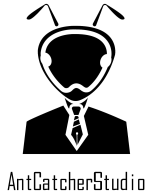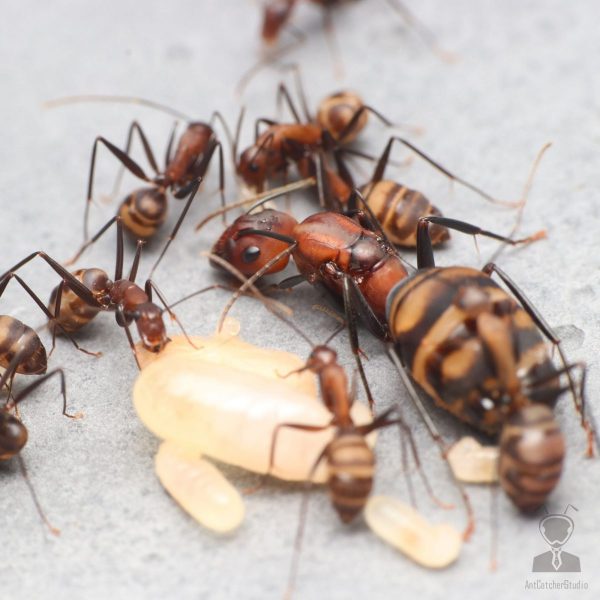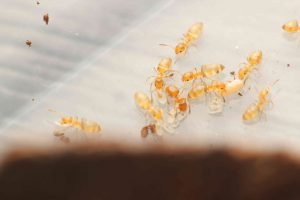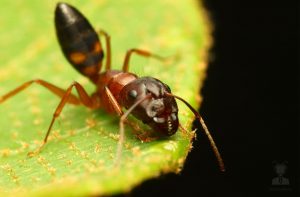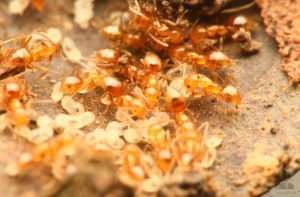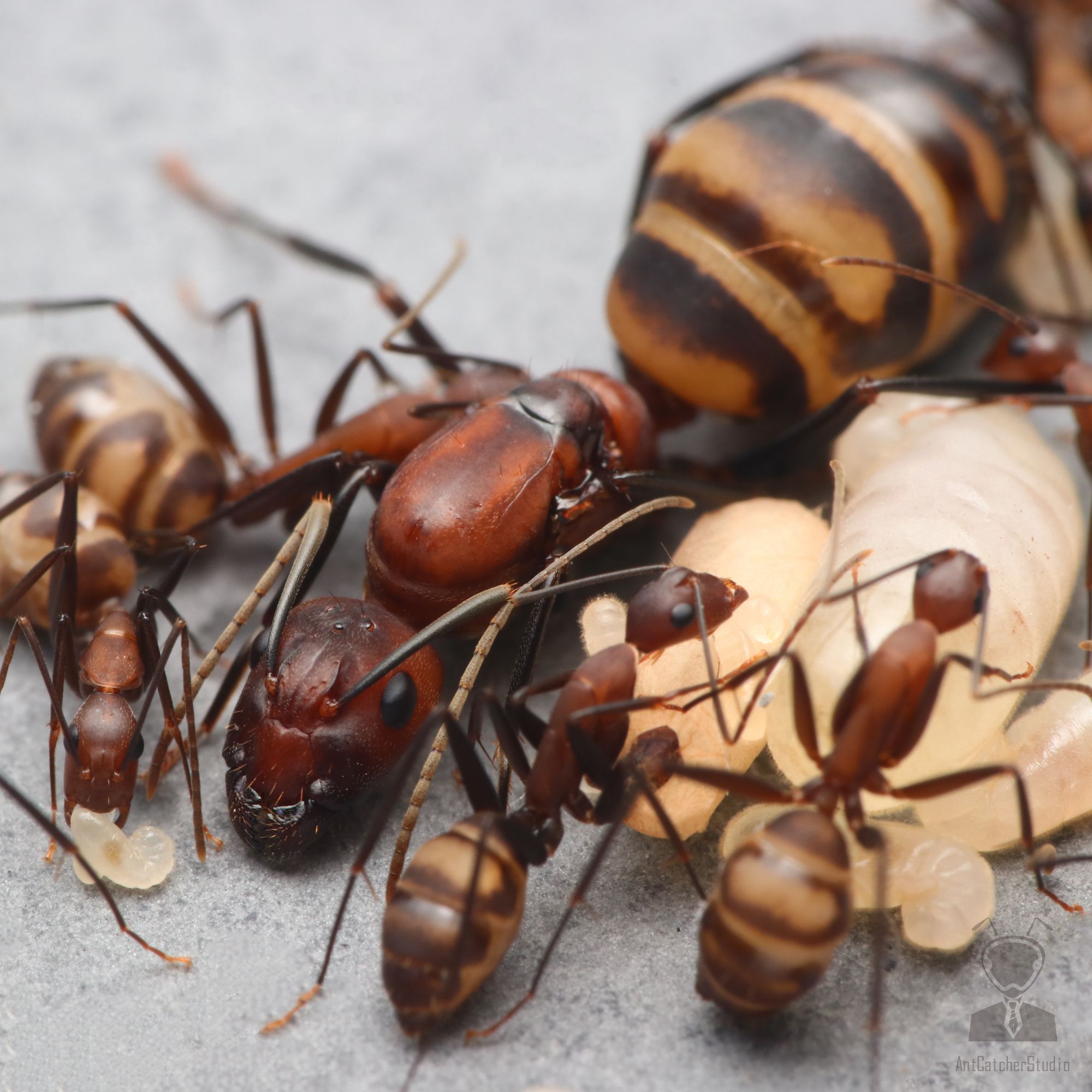
文章目錄
簡介
臭巨山蟻是一種體型較大的螞蟻,台灣原生種,有特殊虎斑花紋,外型非常美麗,是非常具有代表性的台灣蟻種。
※臭巨山蟻不會臭
蟻種資訊
臭巨山蟻學名:Camponotus habereri |
|||
|---|---|---|---|
|
工蟻頭胸為紅褐色,腹部呈現「虎斑」紋路,具大型工蟻階級,使用大顎和噴灑蟻酸做為主要武器,在巨山蟻中屬大型蟻。 臭巨山蟻為單蟻后制的螞蟻,成熟群落由1隻蟻后及約2000~5000隻的職蟻組成。臭巨山蟻屬雜食偏素食性的螞蟻,在野外以植物花蜜、蜜腺分泌或小型昆蟲為食,廣泛分布於全台,樹棲型螞蟻,築巢於倒木、腐木、樹洞中,夜行性,在野外很容易發現其蹤跡,且平均工蟻體型隨群落發展年齡逐漸增加,野外的臭巨山蟻工蟻體型明顯比飼養的臭巨山蟻還要大上許多。 飼養難度中等,以飼料為主食,使用石膏蟻巢、加氣磚、試管飼養,喜好偏乾燥、陰涼的環境。由於體型大,工蟻生長速度較慢,飼養過程中減少蟻巢加水量、保持溫度在24~26度,將可以使臭巨山蟻群落快速穩定成長。紅褐色和虎斑條紋的配色放眼全世界,都屬於稀有的外型,加上台灣原生種的身分,使臭巨山蟻成為知名、足以代表成為最具識別度的螞蟻。 ※臭巨山蟻不會臭 |
|||
飼養資訊 |
|||
飼養容易度 |
中等 | ||
溫濕度控制 |
相對乾燥、涼爽的蟻巢環境,不超過30度為主 | ||
生產速度 |
稍慢 |
個性 |
防衛兇猛 |
生物學資訊 |
|||
制度 |
單后制 |
食性 |
雜食偏素食性 |
巢型 |
枯木、腐木 |
特有種 |
台灣原生種 |
體長 |
蟻后 |
約14〜16mm | |
兵蟻 |
約8〜13mm | ||
工蟻 |
約7〜8mm | ||
購買連結
清晰照片
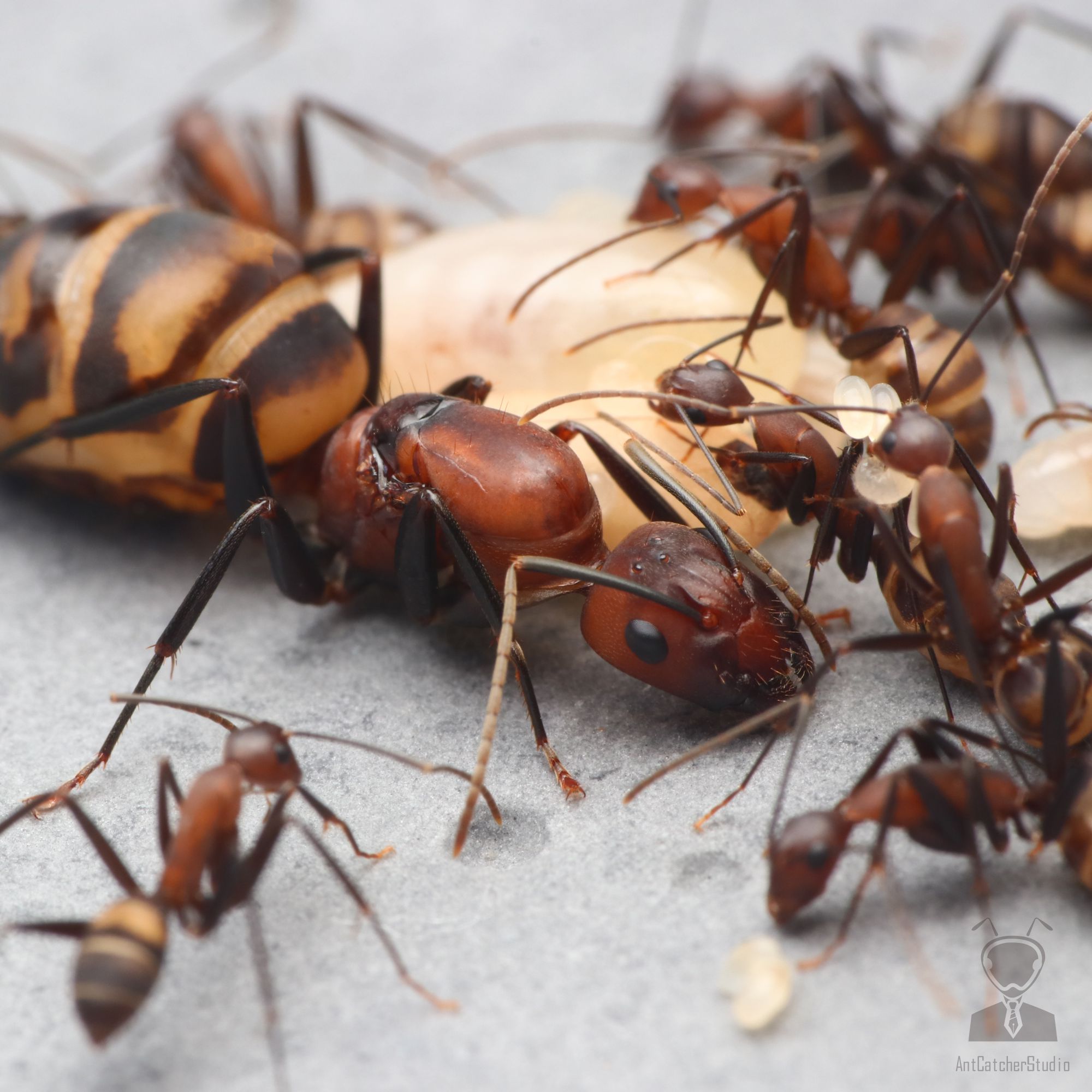

※註:目前科學界尚不知曉其原理,肉豬僅為玩家們飼養觀察結果推論,其背後可能有真正其他原因
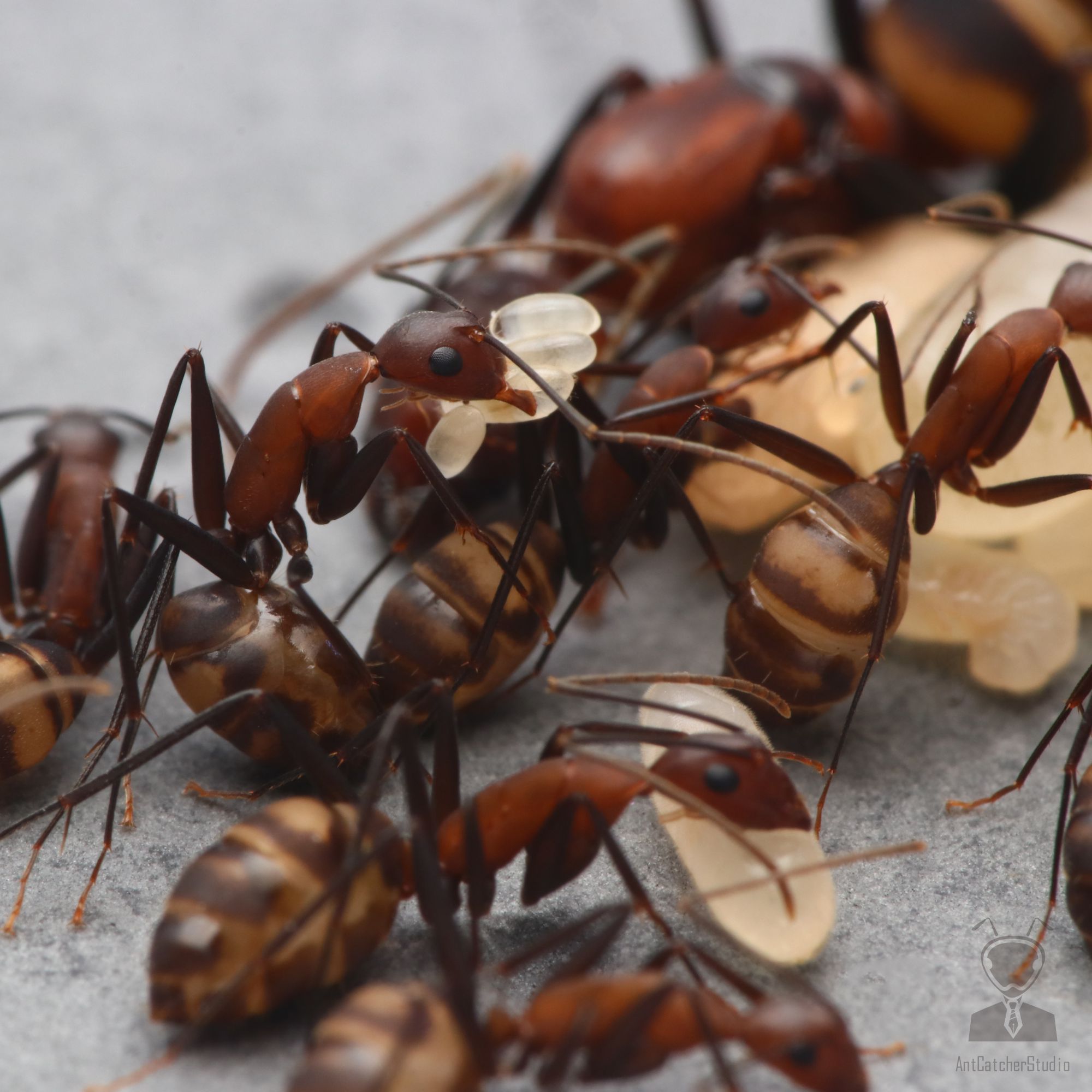


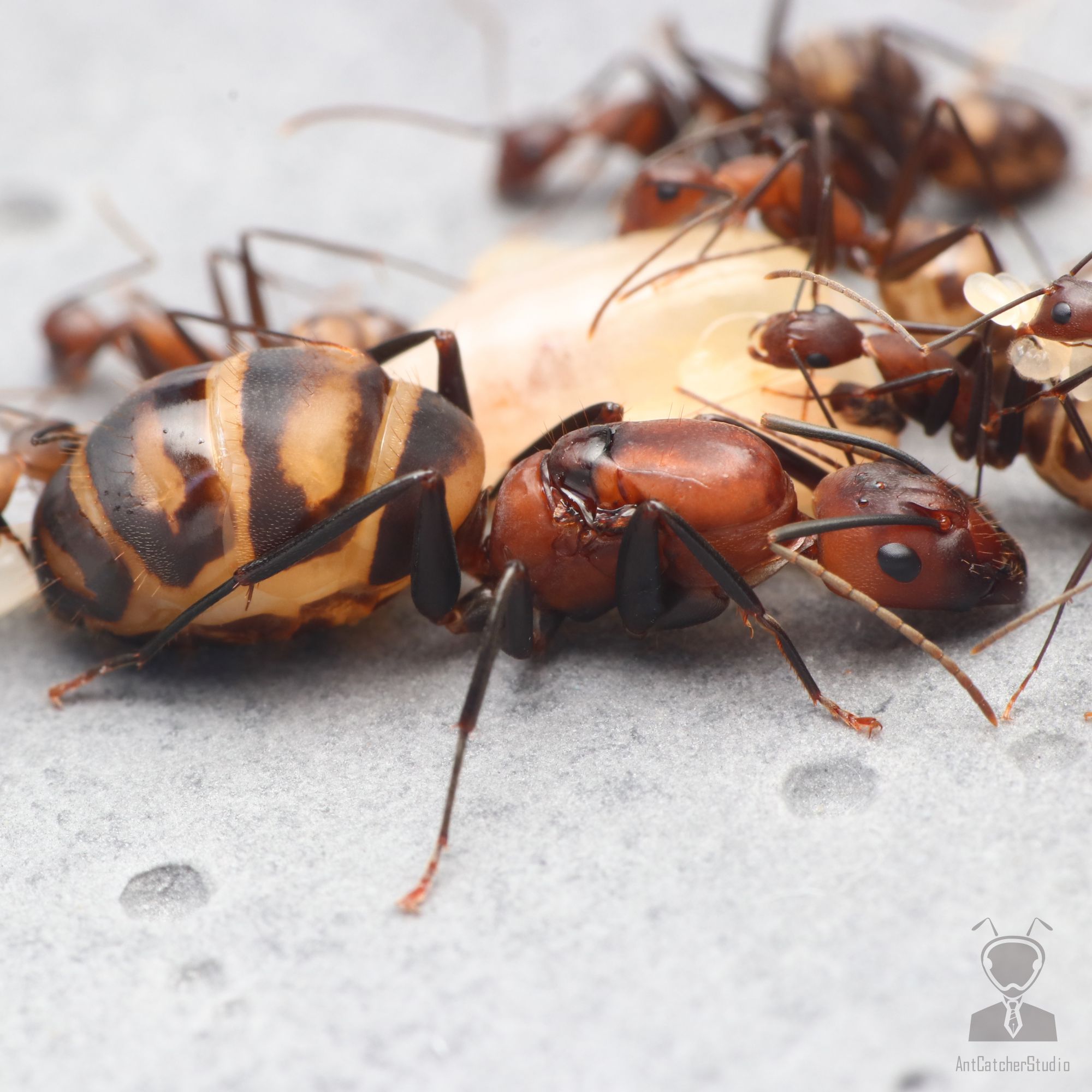
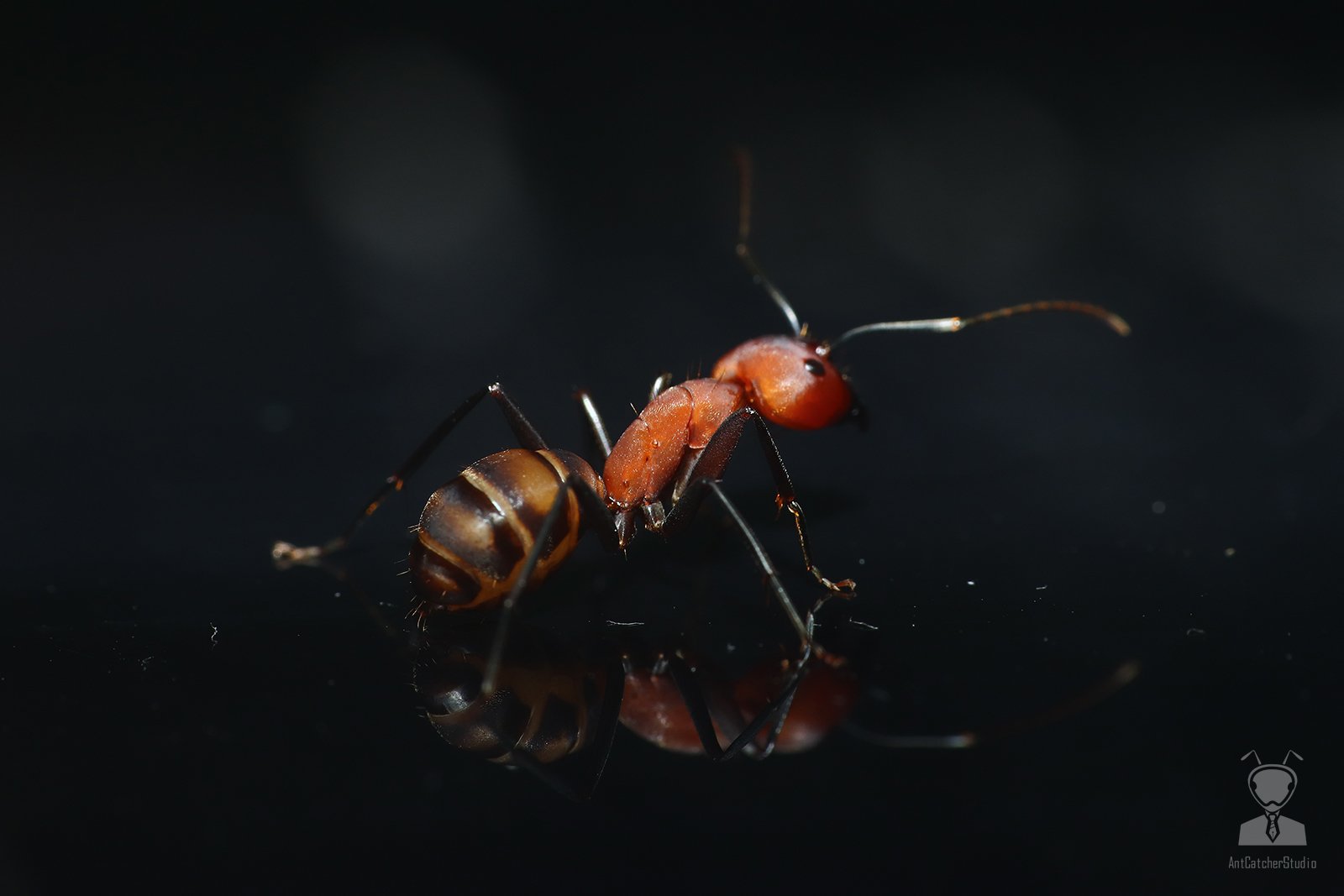

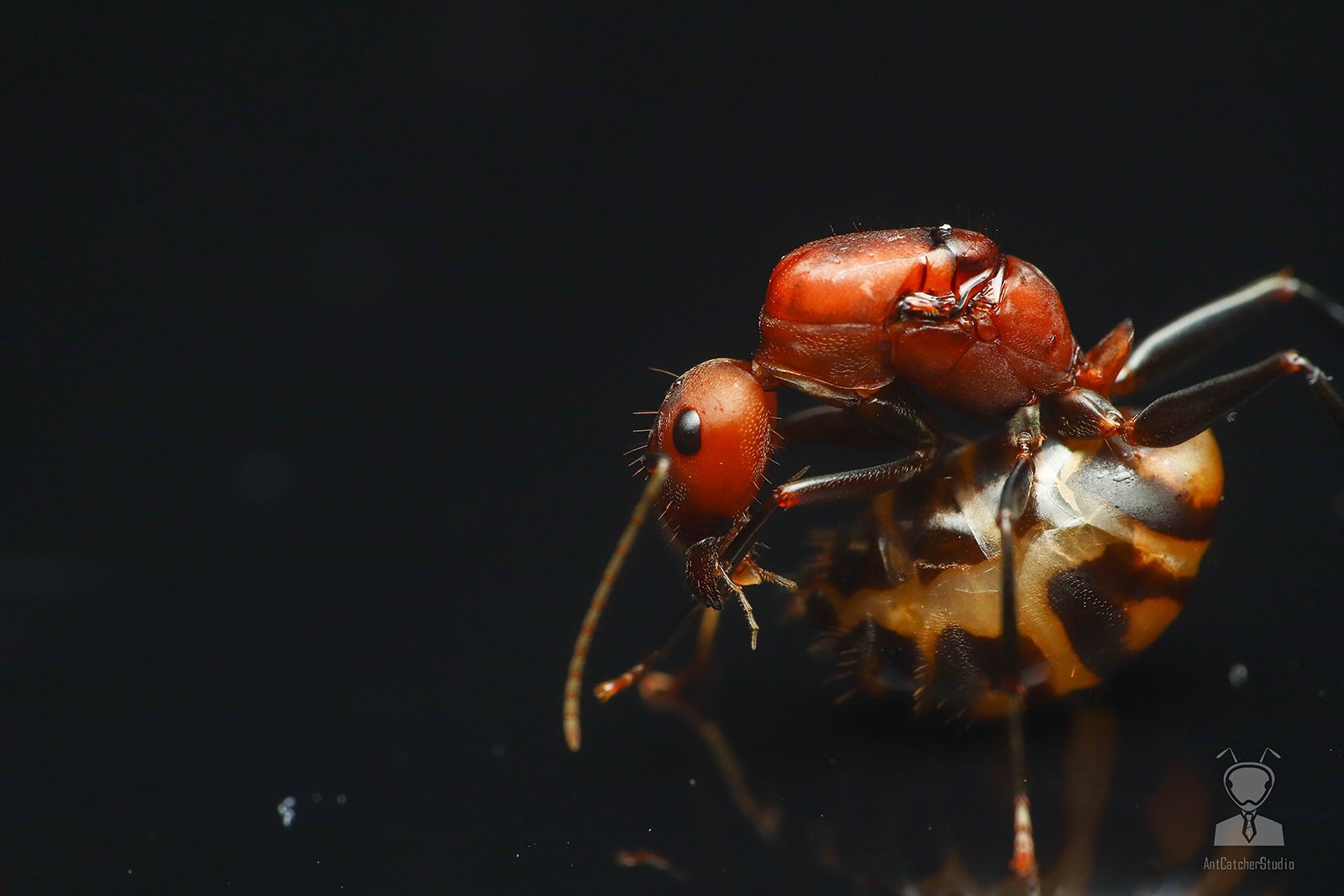
詳細飼養方式

如何飼養臭巨山蟻?以飼料為主食,使用石膏蟻巢、加氣磚、試管飼養。於室溫環境下給予水塔即可,給予相對較涼快或通風的環境。這個章節將會說明臭巨山蟻,在新后到成熟群落的各階段,該如何飼養,以及該注意的地方。
花費時間 至少 365 days
新后,尚未有工蟻
使用堵水試管培養,溫度維持25~30度,放置黑暗環境,靜待約一個月,蟻后會開始產卵並孵育。期間不餵食也可成功出工,但建議維持每週餵一次的頻率,如此一來,卵、幼蟲、繭的數量會明顯增加,並且可幫助虛弱蟻后補充能量。
新后,出1~20隻工蟻
首批工蟻出生後,開始增加餵食頻率,依照群落發展狀況調整,從1週1次~1週3次皆可,儘量不要讓蟻后產卵頻率中斷,餵食份量適量,切勿給太多,以免食物發臭,此階段不建議餵食活體。
小群落,20~100隻工蟻
隨著人口增加,試管空間逐漸不足,此階段可提供石膏蟻巢、加氣磚蟻巢、或是新增1根堵水試管供群落居住,搬家過程務必使用引導方式,不可暴力倒出,以免蟻群受驚嚇,導致蟻后停產。依照取食狀況調整餵食頻率,從1週1次~1週3次,可開始給予活體食物(非必要),活體務必燙熟或是弄殘,螞蟻有將食物搬回巢穴的習慣,因此活體建議越少越好,以免螞蟻吃不完,導致蟻巢嚴重發霉。
中小群落,100~1000隻工蟻
視狀況為群落提供更大的蟻巢,人口增加,蟻群食量也增加,因此也要增加餵食頻率,依照取食狀況,一週餵食2次~4次。
成熟群落,1000隻工蟻以上
臭巨山蟻成熟群落,工蟻數量上限約在2000~5000隻左右,此階段將開始產出雄蟻、處女蟻后等階級,依照取食狀況,每週餵食5~7次。
FAQ
臭巨山蟻會臭嗎?
臭巨山蟻不會臭。
臭巨山蟻去哪抓?
全台各處都有分布,於婚飛季節捕捉新后即可。
臭巨山蟻婚飛時間?
每年6~9月是婚飛季,晚上6點~9點可在郊區、山區有光源處發現蟻后(有機率)。
其他山蟻亞科蟻種
阿祿斜山蟻 Plagiolepis alluaudi
你覺得這篇文章如何? 點擊評分...閱讀更多
小巨山蟻 Camponotus sp.1 ( 俗稱 四斑小巨山蟻 )
你覺得這篇文章如何? 點擊評分...閱讀更多
尼蘭德山蟻 Nylanderia sp.3
你覺得這篇文章如何? 點擊評分...閱讀更多
長腳捷山蟻 Anoplolepis gracilipes
你覺得這篇文章如何? 點擊評分...閱讀更多
本站竭盡所能檢驗資料正確性,但仍可能有部分內容錯誤或未及時更新,還請您海涵,也歡迎來信指正錯誤之處。
本公司具有本站所有原創文字、原創圖片之完全版權及著作權,本站原創內容採 CC BY-NC-ND 3.0 ( 姓名標示 – 非商業性 – 禁止改作 )方式授權您使用,但尤其嚴禁轉載、編輯至百科類網站 (包括但不限於維基百科 ) 。
針對侵權行為本公司將直接對行為人要求索賠。第三方單獨授權本站使用之文字、圖片,本公司亦有維護原作者權益的責任。
本站除原創內容外還有部分內容來自開放版權內容和對已公開發表的文獻的利用與整理,所引用之相關圖片、文字將會進行標註說明。
